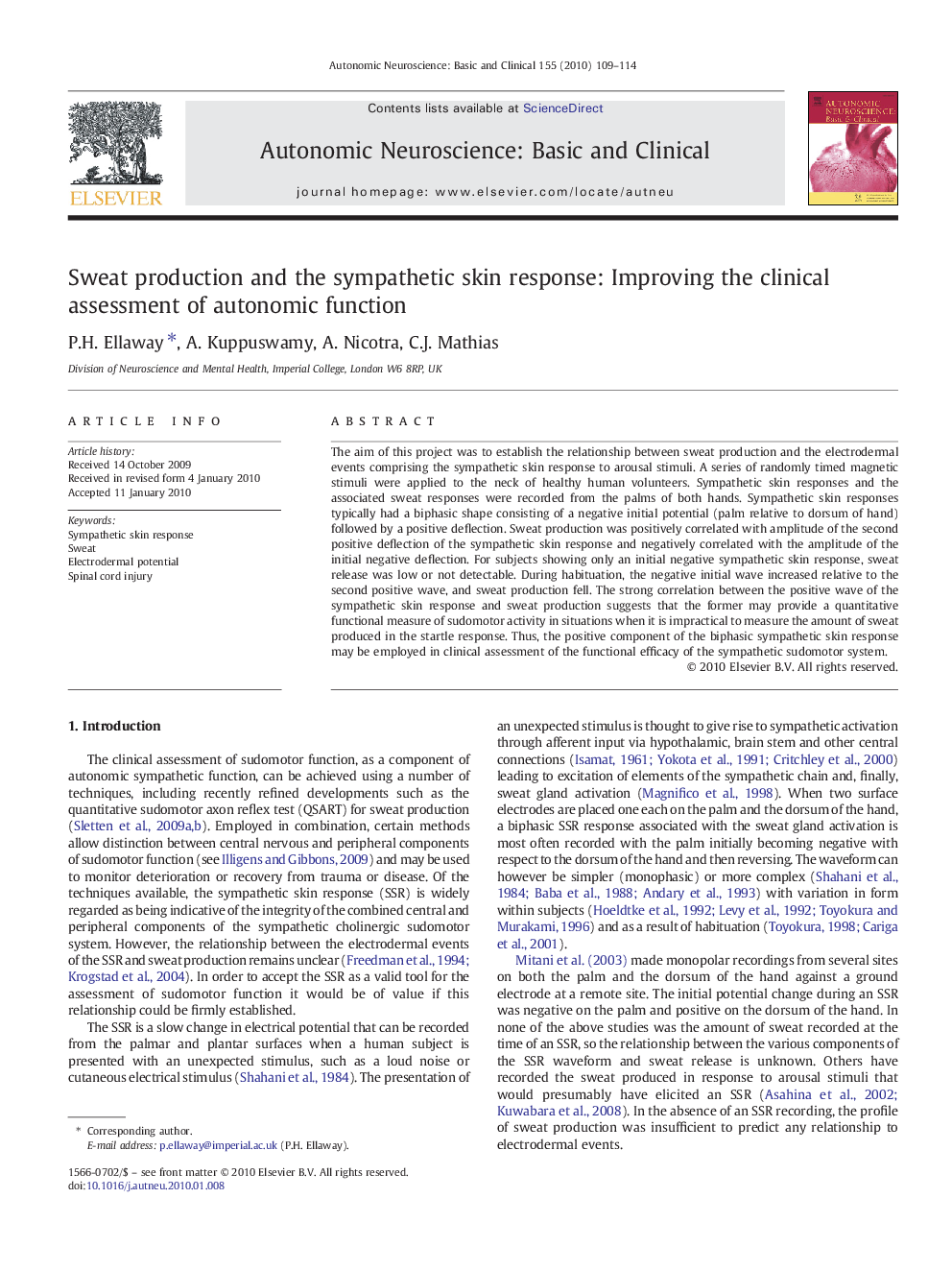| Article ID | Journal | Published Year | Pages | File Type |
|---|---|---|---|---|
| 3035127 | Autonomic Neuroscience | 2010 | 6 Pages |
The aim of this project was to establish the relationship between sweat production and the electrodermal events comprising the sympathetic skin response to arousal stimuli. A series of randomly timed magnetic stimuli were applied to the neck of healthy human volunteers. Sympathetic skin responses and the associated sweat responses were recorded from the palms of both hands. Sympathetic skin responses typically had a biphasic shape consisting of a negative initial potential (palm relative to dorsum of hand) followed by a positive deflection. Sweat production was positively correlated with amplitude of the second positive deflection of the sympathetic skin response and negatively correlated with the amplitude of the initial negative deflection. For subjects showing only an initial negative sympathetic skin response, sweat release was low or not detectable. During habituation, the negative initial wave increased relative to the second positive wave, and sweat production fell. The strong correlation between the positive wave of the sympathetic skin response and sweat production suggests that the former may provide a quantitative functional measure of sudomotor activity in situations when it is impractical to measure the amount of sweat produced in the startle response. Thus, the positive component of the biphasic sympathetic skin response may be employed in clinical assessment of the functional efficacy of the sympathetic sudomotor system.
